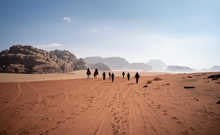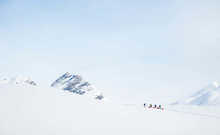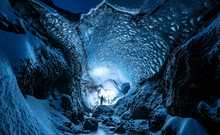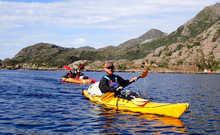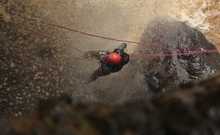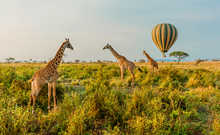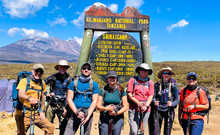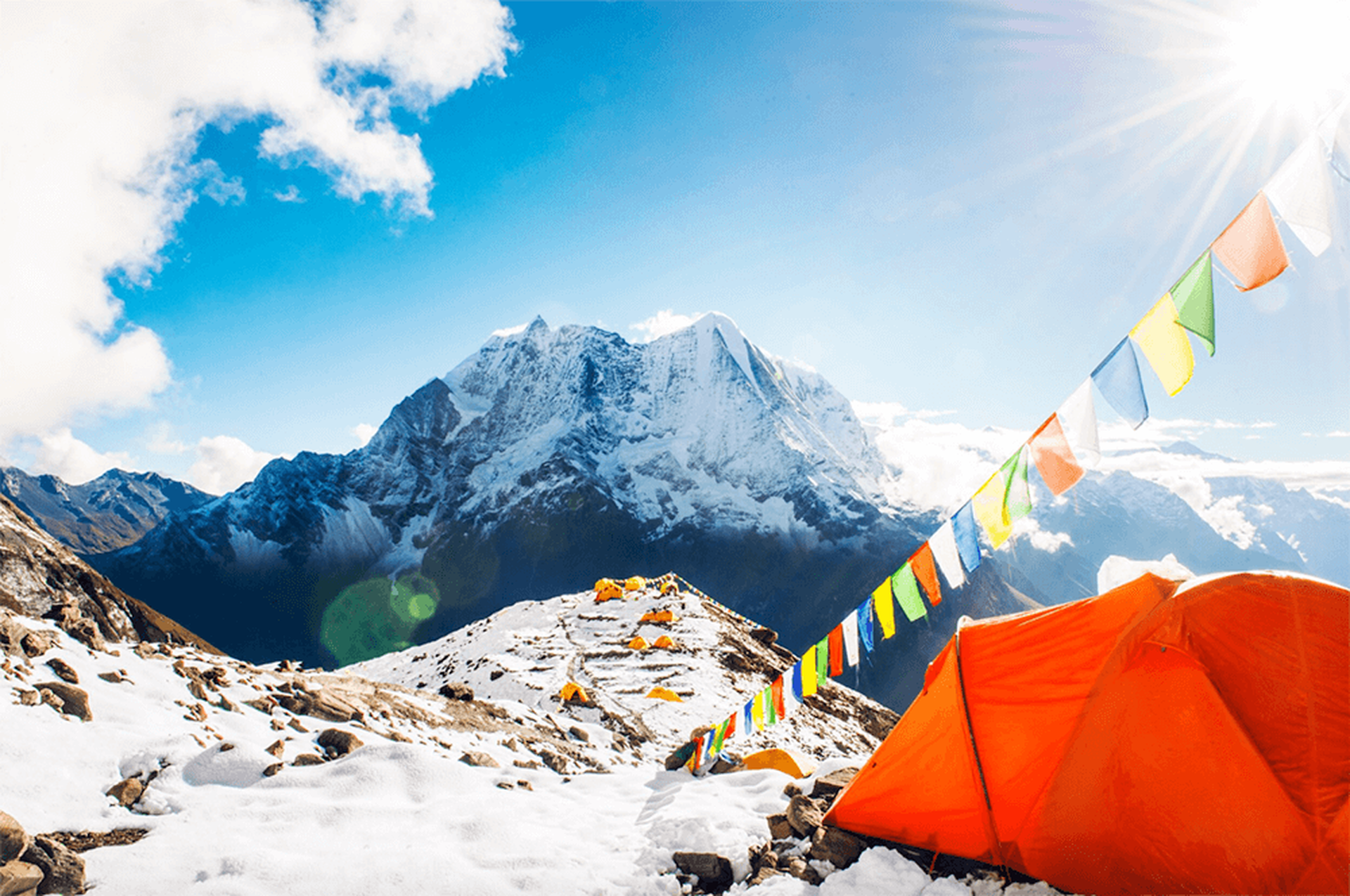Why Nepal and Tourism Need Each Other
As a country landlocked between the mountain ranges of the Himalayas to the north and the Ganges of northern India to the south, Nepal remained largely isolated from the rest of the world until well into the mid-20th century. Historically, this developing country has relied on agriculture and remittances from abroad to fuel economic growth, which remain the principal contributors to Nepal’s economy today. Yet, moving towards a more sustainable model for economic growth is very much on the agenda of Nepal’s consecutive development plans.
This is where tourism comes in. Adventure travel especially, where less infrastructure is required than say the luxury travel market, brings essential revenue that fuels necessary improvements to employment, infrastructure, conservation and preservation.
More than half of Nepal’s income is currently generated by agriculture, which faces a raft of challenges ranging from a lack of mechanisation to poor seed quality, inefficient irrigation and fertiliser shortages. The importance of the rising visitor economy and the welcome funds it generates are significant to a country struggling to modernise.
Boasting the incredible Himalayan mountain range as its most attractive natural asset, the Nepal tourism industry is creeping back towards pre-pandemic levels, bringing much needed income, especially to the rural communities of the north. Each traveller who visits Nepal plays a pivotal role in supporting the growing economy of this intriguing country. As an adventure travel company that cares about the destinations we trek, we’re doing everything we can to support sustainable development in the mountains of Nepal, for both the people we employ there and the wider communities they are part of.
Below we take a closer look at how tourism benefits Nepal, positively contributing towards the livelihoods of Nepalese people residing in rural areas, especially those who typically have less access to jobs, services and education.
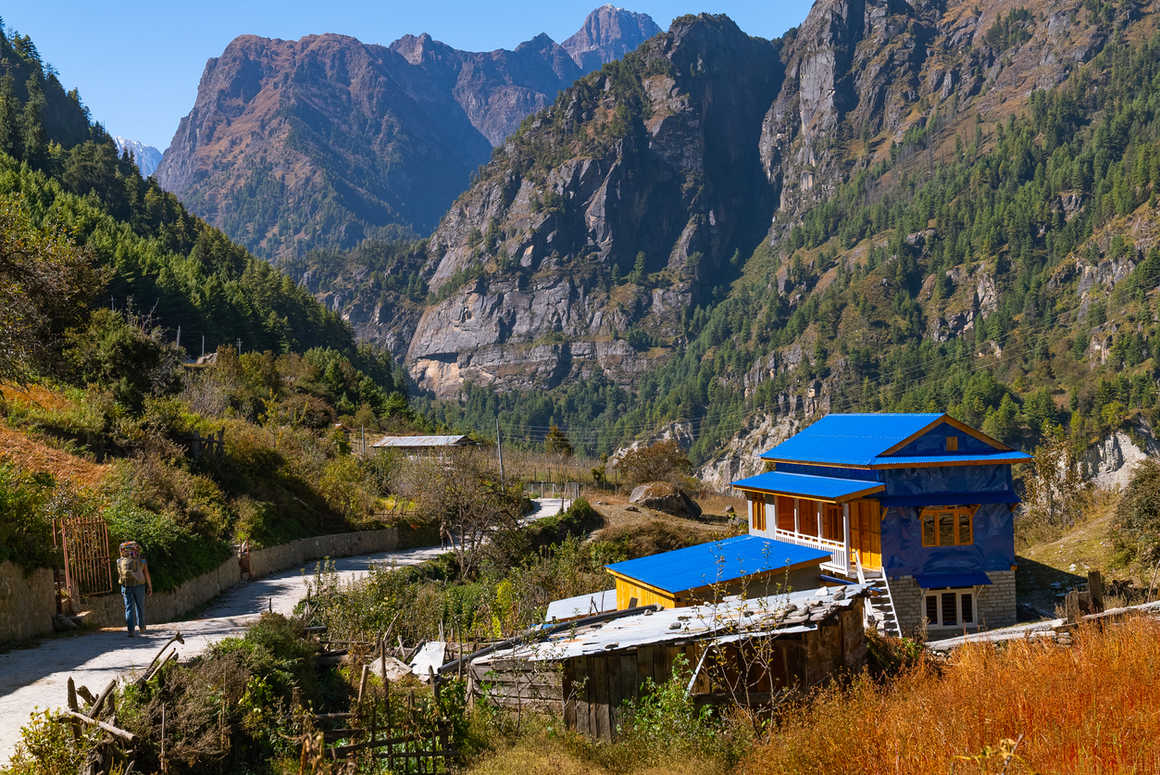
Supporting Employment
In Nepal, tourism supports employment both directly and indirectly. The World Travel and Tourism Council (WTTC) recently reported that 1.2 million direct and indirect jobs were provided by the tourism industry in 2023, as published in The Daily Tribune and shared on LinkedIn.
Jobs made viable through direct tourism spend include staff roles in hotels, lodges, restaurants, cafés and teahouses, those who work as guides, porters, drivers, cooks and support staff. In addition to this are the Nepali people who own, run and manage tour operators and travel agents catering to the domestic and international visitors who come to trek, ski, climb and explore the mighty Himalayas.
Aside from creating employment opportunities in customer-facing roles, there are a whole host of jobs that indirectly support the tourism sector. These include craftspeople, tradespeople and artisans who make clothing, jewellery, crafts and souvenirs for visitors to buy, and build the roads, accommodation, and infrastructure needed to sustain the increasing numbers of visitors travelling to Nepal. Farmers and food supplies also indirectly benefit from visitor income as they supply provisions to the businesses that cater to tourists.
Over 80% of the population of Nepal live in rural areas and those closest to the visitor hotspots rely on income from tourism-related professions in particular to feed themselves and their families.Places such as Lukla, gateway to the Everest Base Camp Trek, Pokhara, famous for its phalluses, and Kathmandu, the capital of Nepal, are more reliant on the tourist economy than agriculture.
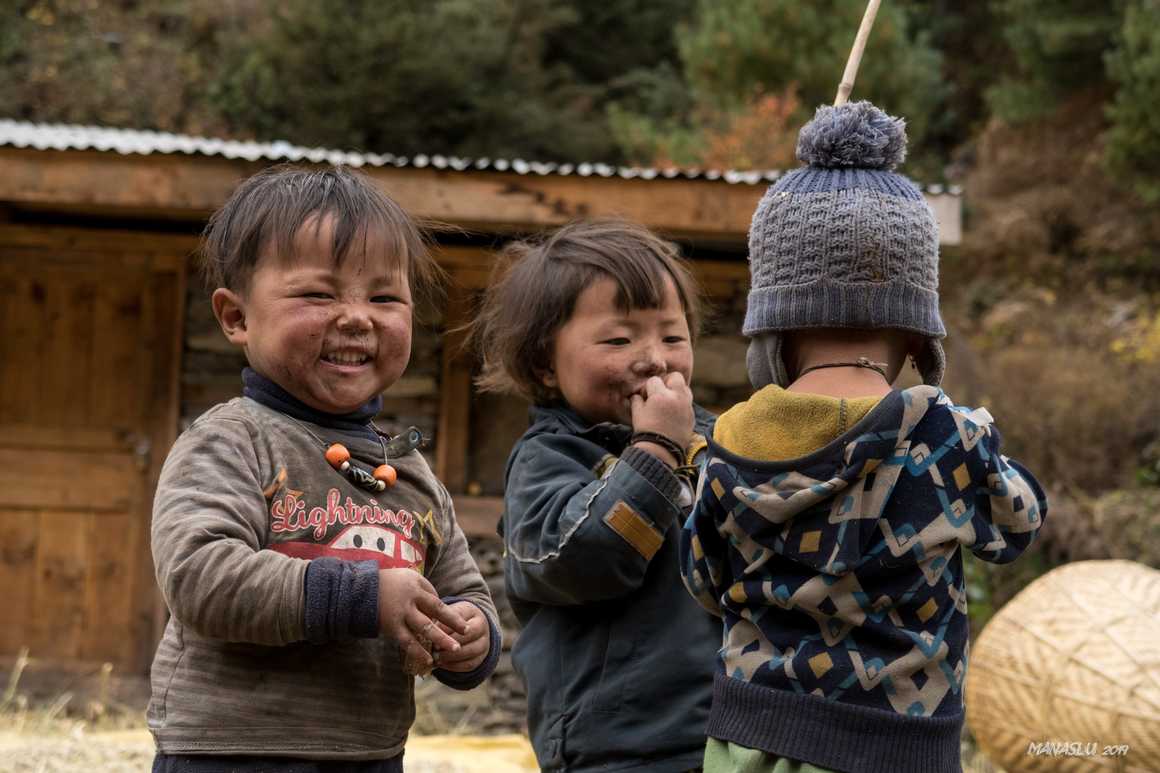
Facilitating Education
Leading on from creating employment opportunities, sustainable initiatives that teach local people the basic skills needed to thrive and find employment through tourism jobs are vital to supporting a sustainable and stable source of income for Nepali people.
The World Factbook reckons that Nepal has a literacy rate of just 68.7% which is well below the average 86.3% global literacy rate published by the World Economic Forum. However, primary education was made compulsory in 2015 and since then, it is thought over 95% of children are now enrolled at a primary school and taught to read and write. Urban students invariably have better access to education than those living in rural regions but again, this is changing.
The country’s increasing reliance on tourism to fund economic development and employment means there are more training programs, apprenticeships and vocational qualifications than ever before. With increasing demand for these academic programs, sector specific training provides the skills required that local Nepali people need to share the growing prosperity of income generated through the visitor economy of Nepal.
As demand for adventure activities grows, Nepal’s education system has improved to upskill a workforce able to shape the infrastructure needed to cater for this burgeoning industry. As of 2025, there are more schools than ever in Nepal (estimated to be over 22,200), with over 300,000 teachers, indicating a shift towards a more sustainable education model, capable of supporting a thriving tourism industry.

Community Infrastructure
At its most basic level, increased visitor numbers bring in more revenue, which can be reinvested to improve access and infrastructure - benefitting not only future visitors but also local communities. Infrastructure improvements such as roads, the installation of power, sanitation and local services have increased to facilitate the growing number of visitors, especially to the Himalayas and the gateway towns and cities to some of the most popular mountains.
Challenges with improving rural infrastructure, especially, include access to remote villages. The installation of mains electricity is not widespread due to the lack of roads between more inaccessible mountain communities. Therefore, power is generated through solar panels and small hydroelectric stations, capitalising on the natural resources available and providing vital power to the regions experiencing higher visitor numbers. Again, the benefit of access to renewable energy is felt by whole communities. To achieve this, funding is generated through income from tourism and foreign investment, but the hope is that the improvements put in place now will eventually be funded through tourism alone, ensuring rural communities are more connected well into the future, without the need for over-reliance on foreign remittance.

Cultural Preservation
Typically, if you’re travelling in Nepal you’re likely to be the kind of person who wants to explore a new destination, learn about local customs and traditions, sample local cuisine and interact with Nepali people. Nepal attracts adventurers who come to climb Everest, or trek to Everest Base Camp, visit Kathmandu and spot wildlife in Chitwan National Park.
During most trekking trips, it is impossible to miss the shrines, temples and stupas dotted along the routes, attracting questions about their significance. Hinduism is the main religion of Nepal with deep roots across this spectacular nation. Conversations that start in the mountain transcend the trails, bringing interest and understanding to interactions with Nepali people as they explore this fascinating country.
When visitors love learning about the history and heritage that makes this country such a magical place, it encourages entrepreneurism that promotes the culture and customs of a place. Local museums and history centres, cultural performances and religious festivals attract visitors and locals alike and help protect and preserve local traditions for future generations.
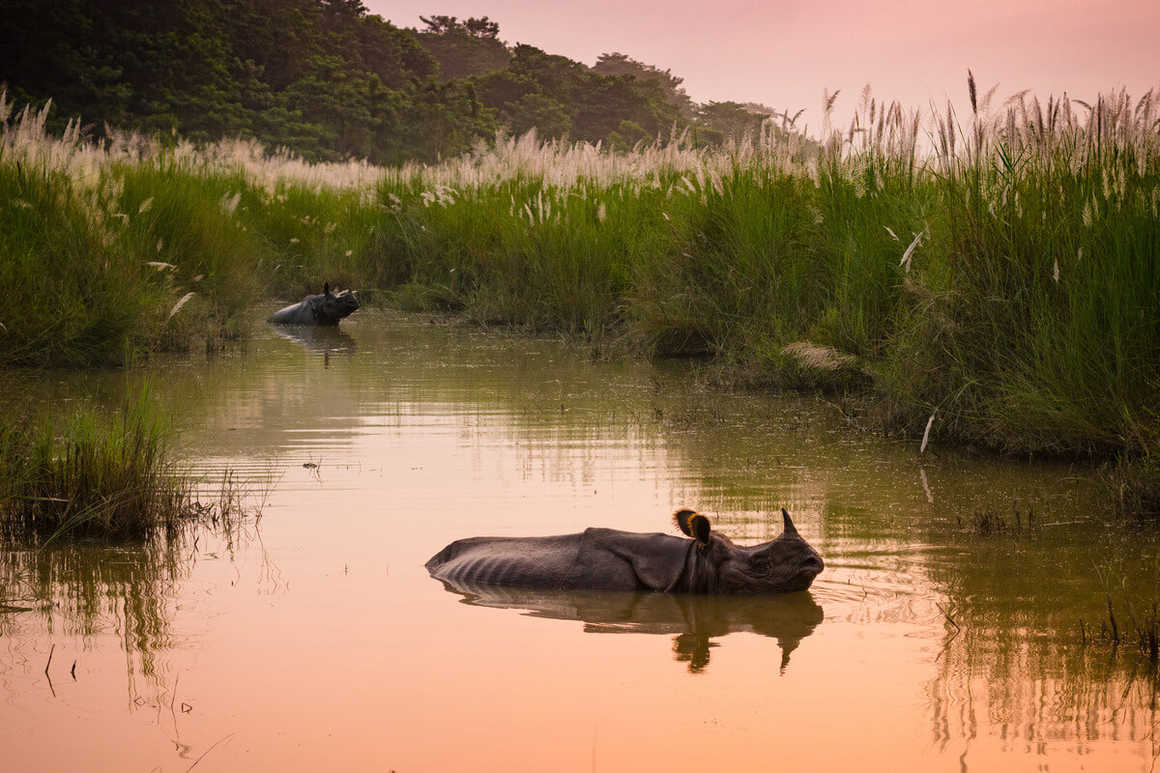
Conservation
Approximately 20% of Nepal’s landscapes are protected as designated national parks, wildlife reserves and conservation areas. Visitors to these areas are strictly regulated to preserve the diverse plant and animal species inhabiting them. Income generated from tourism to conservation areas and the 12 national parks in Nepal, helps fund conservation initiatives and support adjacent communities through local employment.
Eco-tourism is also a growing industry in Nepal with cultural homestays, eco-lodges and reforestation all ploughing funds back into the local communities and funding infrastructure such as improved access to services, education and employment. Community-led projects, especially in mountainous areas attract volunteers from overseas who come to tend time, resources and support to these initiatives, driving local spending whilst supporting useful causes.
And it’s not just Nepalese schemes promoting conservation; ethical and responsible tour companies based abroad who operate in Nepal, like Kandoo Adventures, recognise the value in supporting local conservation, ensuring the landscapes and wildlife are protected for future generations. This core principle for sustainable economic growth, investing in the infrastructure and opportunities around conservation, means that Nepal can continue to sustainably attract visitors who, in turn, contribute to improving infrastructure, employment and access to local services for the communities who live around protected areas.
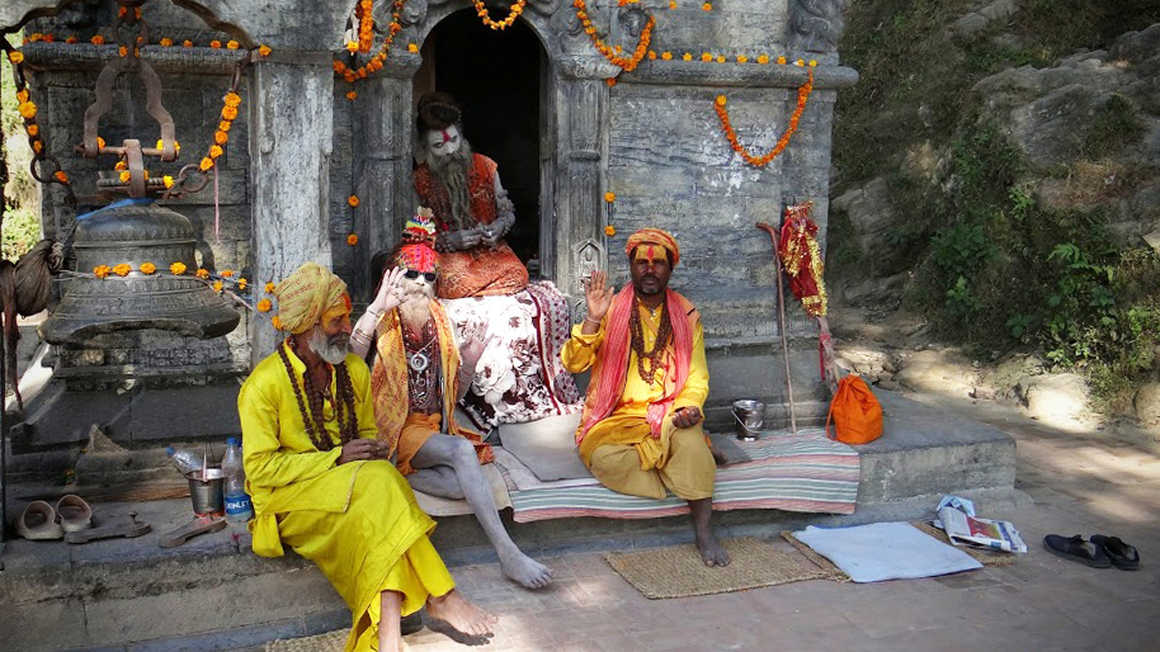
Challenges
While we’ve talked about the positive impact adventure travel to Nepal has on communities, the growing number of people visiting Nepal for tourism is not without its challenges. In particular, trekking in Nepal is often a seasonal activity and those reliant on visitors coming to hike in the Himalayas often need to find alternative employment outside of the trekking seasons.
In addition to this, global warming and associated climate changes have wrought havoc on regions at risk. Nepal has faced earthquakes and flooding in recent years which have caused the loss of life, habitats, infrastructure and affected entire communities. Little can be done to stop natural occurrences, however, future planning can help prepare those most vulnerable to natural disasters. What it can’t do is predict the likelihood of these events.
Despite plenty of positive change, gender inequality still prevents women from accessing many of the jobs their male family members have. It is rare to see female mountain guides, porters and sherpa as communities are patriarchal and often prohibit women from working in male-dominated roles. Saying that, more women are employed directly and indirectly in the tourism sector than ever before, so gradually, a more equitable society is approaching. Check out our blog about the inspirational women who have climbed Everest, many of them Nepali who overcame cultural obstacles to succeed on the mountain. Or read about Lhakpa Sherpa, Mountain Queen, who pretended to be a boy to get work as a porter.
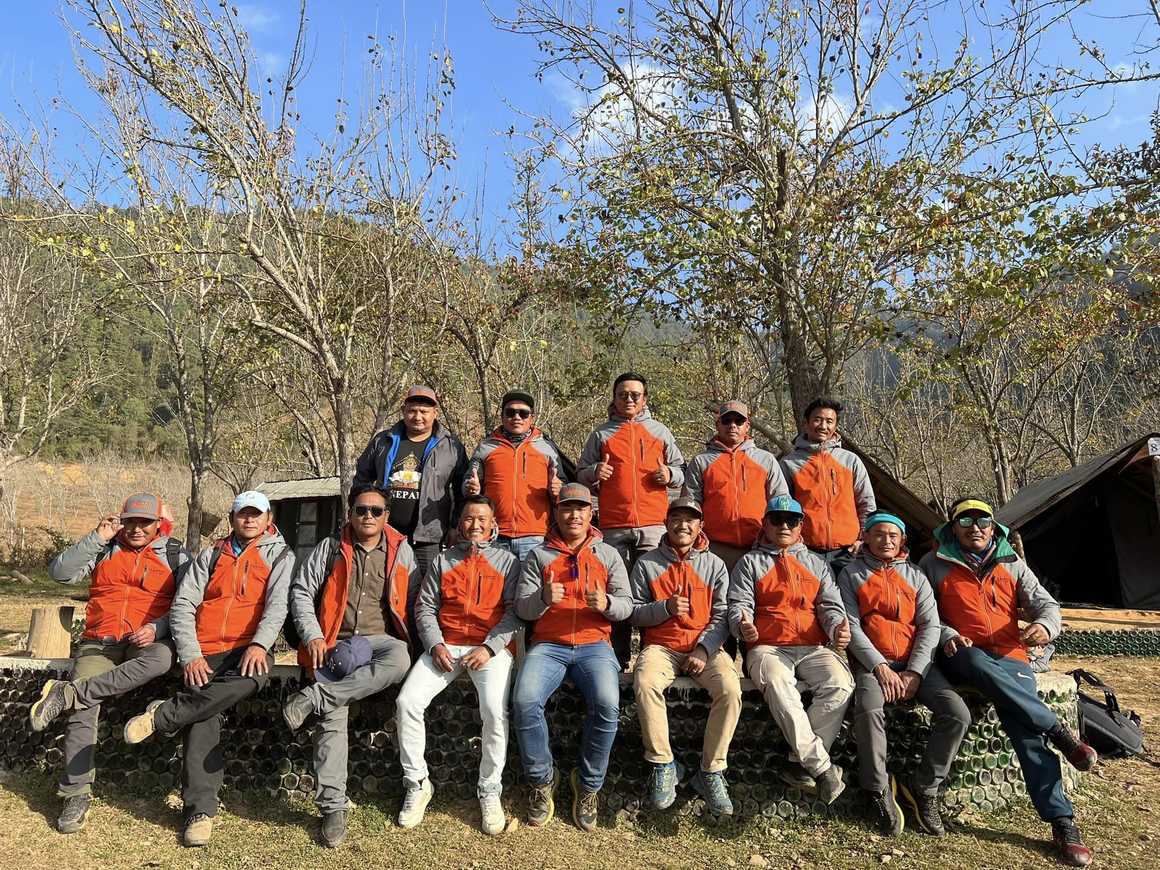
How your Kandoo trip makes a difference
As one of the very first destinations we began taking adventurers to, Nepal is a country close to our hearts. We have a dedicated in-country team employed directly by us who run and manage all our trips to the Himalayas. Our Nepali colleagues are born and raised in Nepal; they live and work in the mountains and have the expert knowledge and experience to safely guide our guests on their treks. They are passionate about their country and delight in sharing local knowledge, stories and phrases that entertain weary trekkers after long days walking.
In 2025, Pimba, our Nepal destination manager, set up the Kandoo Himalayan Foundation. This fund specifically supports the community of Hongong where many of our guides are from, by rebuilding roads and improving access to the region, supporting the local school and providing education to children in the surrounding areas, covering medical fees and offering career prospects, allowing them to choose where they work.
We donate $50 for every person who books a trip to Nepal and a further $100 to an associated welfare fund which supports our team in Nepal when they are unable to work. Whilst our wages are competitive and fair, the extra support initiatives such as this provide are invaluable to our team. You can find out more about our values, ethos and commitment to sustainable travel in our related articles.
Kandoo are striving to make a difference, introducing carbon offsetting to all our trips, planting trees in reforestation projects and supporting the local communities we travel to. Not all adventure companies give back to the places they visit, but we think supporting incredible destinations like Nepal to precipitate lasting change and sustainable economic growth is vital for ensuring the incredible places we visit are preserved for generations to come.
